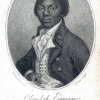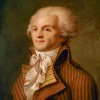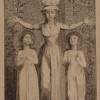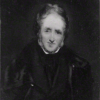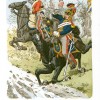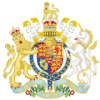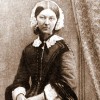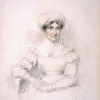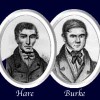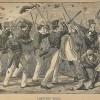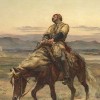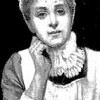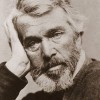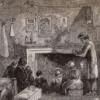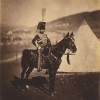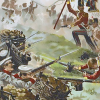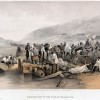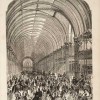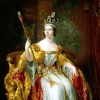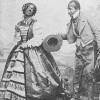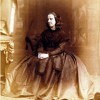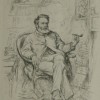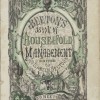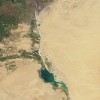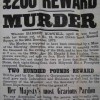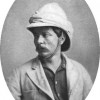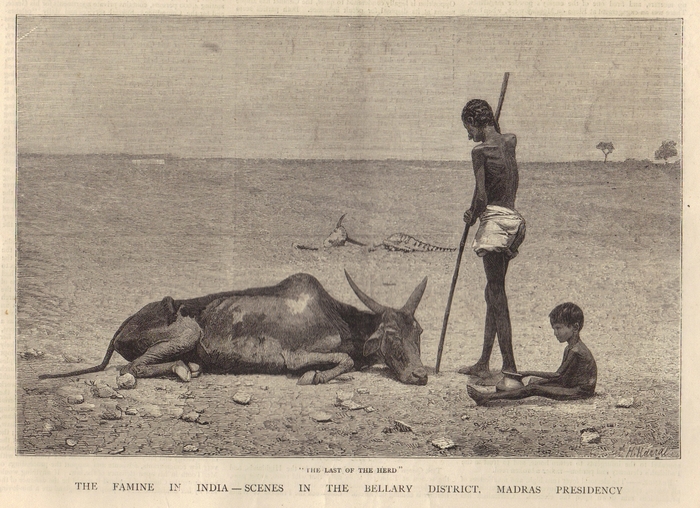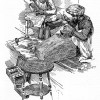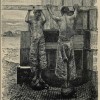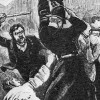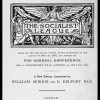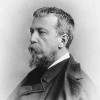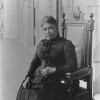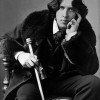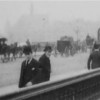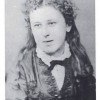This timeline highlights historical, political, social, and cultural events related to women, colonialism, and enslavement.
Timeline
Table of Events
| Date | Event | Created by |
|---|---|---|
| 9 Apr 1787 | First settlers depart for Sierra Leone
Articles |
David Rettenmaier |
| Jan 1789 | Interesting Narrative of the Life of Olaudah Equiano
Articles |
David Rettenmaier |
| 5 May 1789 to 10 Nov 1799 | French Revolution
On 5 May 1789, the Estates-General, representing the nobility, the clergy, and the common people, held a meeting at the request of the King to address France’s financial difficulties. At this meeting, the Third Estate (the commoners) protested the merely symbolic double representation that they had been granted by the King. This protest resulted in a fracture among the three estates and precipitated the French Revolution. On 17 June, members of the Third Estate designated themselves the National Assembly and claimed to represent the people of the nation, thus preparing the way for the foundation of the republic. Several pivotal events followed in quick succession: the storming of the Bastille (14 July), the approval of the Declaration of the Rights of Man and of the Citizen (26 August), and the march on Versailles that led to the enforced relocation of the royal family to Paris (5-6 October). These revolutionary acts fired the imagination of many regarding the political future of France, and, indeed, all of Europe. The republican period of the revolution continued in various phases until 9-10 November 1799 when Napoleon Bonaparte supplanted the government. ArticlesDiane Piccitto, "On 1793 and the Aftermath of the French Revolution" |
David Rettenmaier |
| 1 Jan 1792 | Vindication of the Rights of Woman
ArticlesAnne K. Mellor, "On the Publication of A Vindication of the Rights of Woman" Related Articles |
David Rettenmaier |
| 1792 | "Vindication of the Rights of Woman" is PublishedMary Wollstonecraft's A Vindication of the Rights of Woman is considered a “trailblazing” work for feminism (Britannica). In the piece, Wollstonecraft addresses womanhood of the middle class and criticizes what was considered a female education at the time. While men receive an education of the mind and body, women are taught to act weak, to dedicate their time to finery and fashion. Neglecting to teach women anything other than how to be attractive on the “marriage market”, will only leave them without profession, without money, and without honor or promise of redemption if they are left or divorced by their husbands. Wollstonecraft believed that women could contribute more to society than just a wife and mother. She writes, “I attribute to a false system of education, gathered from the books written on this subject by men who, considering females rather as women than human creatures ...are only anxious to inspire love, when they ought to cherish a nobler ambition, and by their abilities and virtues exact respect”. The thinking at this time was that women’s obsession with marriage and delicacy was natural, but Wollstonecraft uses her work to demonstrate that this is a result of women’s artificial education. She argues that if men and women are raised with the same aspirations, than the differences between them will/can be considered more natural. She suggests a total education — one that shapes the whole person — of both sexes. This, she argues, will benefit all of society. Although Wollstonecraft’s work was well-received within within her own intellectual circle, the rest of society’s reaction was negative. The ideas expressed in A Vindication of the Rights of Woman were very radical for her time, but would later provide a solid platform for Romantic feminists who worked to improve the lives of women. To learn more about the reactions to Wollstonecraft’s work, click here. To learn more about Romantic Feminism, click here. To learn more about Mary Wollstonecraft, click here. Sources: https://www.britannica.com/biography/Mary-Wollstonecraft http://web.utk.edu/~gerard/romanticpolitics/feminism.html https://www.bl.uk/collection-items/mary-wollstonecraft-a-vindication-of-the-rights-of-woman http://shelleysghost.bodleian.ox.ac.uk/godwin-meets-mary-wollstonecraft#Description |
Elizabeth Schafer |
| 5 Sep 1793 to 27 Jul 1794 | Reign of Terror
On 5 September 1793, the National Convention, France’s ruling body from 1793 to 1795, officially put into effect terror measures in order to subdue opposition to and punish insufficient support for the revolution and the new regime. From the autumn of 1793 until the summer of 1794, thousands of people across the country were imprisoned and executed (including the Queen) under the ruthless leadership of Maximilien Robespierre. The guillotine, particularly the one in Paris’s Place de la Révolution, served as the bloody emblem of the fear tactics that began to manifest themselves first in the formation of the Committee of Public Safety (6 April 1793) and subsequently in the implementation of the Law of Suspects (17 September 1793). The Terror ended on 27 July 1794 with the overthrow of Robespierre, who was guillotined the next day. ArticlesDiane Piccitto, "On 1793 and the Aftermath of the French Revolution" |
David Rettenmaier |
| 10 Sep 1797 | Death of Wollstonecraft
ArticlesAnne K. Mellor, "On the Publication of A Vindication of the Rights of Woman" |
David Rettenmaier |
| Jan 1798 | Memoirs of the Author of a VindicationOn January 1798, publication of William Godwin’s Memoirs of the Author of A Vindication of the Rights of Woman. The publication of this first biography of Wollstonecraft causes a scandal and Godwin publishes a second “corrected” edition of the Memoirs in the summer of the same year. ArticlesRelated ArticlesAnne K. Mellor, "On the Publication of A Vindication of the Rights of Woman" |
David Rettenmaier |
| 9 Nov 1799 to 18 Jun 1815 | Napoleonic Wars
Historians do not agree on the exact beginning or end of the wars. November 9, 1799 is an early candidate since that is when Napoleon seized power in France. Hoping to ease the difficulty, historians date by isolated wars. They disarticulate the Napoleonic Wars in a linear series:
The successive numerical coordinates for the Coalitions offer regularity, but that regularity is undercut by the shifting make-up of that Coalition (sometimes Prussia was in, sometimes not; sometimes Russia, sometimes not) and by the discontinuity and ambiguity of the dates. Articles |
David Rettenmaier |
| Jan 1802 | British School founded
ArticlesLinda M. Shires, "On Color Theory, 1835: George Field’s Chromatography" |
David Rettenmaier |
| 26 May 1805 | Napoleon made king of Italy
In a flamboyant and highly theatrical gesture, Napoleon Bonaparte signifies his political and military dominance over the Italian peninsula with a ceremony in Milan Cathedral, where he crowned himself King of Italy with the ancient, iconic iron crown of Lombardy. This crowning of Napoleon as King is a result of the French conquest of Italy. His full title was "Emperor of the French and King of Italy." ArticlesAlison Chapman, "On Il Risorgimento" Related Articles |
David Rettenmaier |
| Jan 1814 | British and Foreign School Society foundedIn January 1814, the British and Foreign School Society for the Education of the Labouring and Manufacturing Classes of Society of Every Religious Persuasion was founded to promote non-Anglican (Dissenting) education. The Society established “British Schools,” also on the monitorial system as influenced by the principles of Joseph Lancaster, a Quaker who promoted education according to broader notions of Christian morality. Related ArticlesFlorence S. Boos, “The Education Act of 1870: Before and After” |
David Rettenmaier |
| 18 Jun 1815 | Battle of Waterloo
Related ArticlesSean Grass, “On the Death of the Duke of Wellington, 14 September 1852″ Mary Favret, "The Napoleonic Wars" Frederick Burwick, “18 June 1815: The Battle of Waterloo and the Literary Response” |
David Rettenmaier |
| Dec 1815 | Emma
ArticlesAnne Wallace, “On the Deceased Wife’s Sister Controversy, 1835-1907″ |
David Rettenmaier |
| 1 Jan 1818 | Frankenstein; or, The Modern PrometheusMary Shelley releases the first edition of Frankenstein. The more popular modern version was released on October 31, 1831, which includes the introduction that explains the novel's origins at Villa Diodati. Frankenstein follows many tenets of Romanticism and takes much influence from Milton's Paradise Lost, which is quoted to open to novel and is read by Frankenstein's monster during the events that take place. The novel focuses on a number of themes, one of the most prominent of which is the idea of "nature against nurture" (itself a key idea of Shelley's mother Mary Wollstonecraft's Vindication of the Rights of Women). Contrary to thinking in oral or even medieval societies, Romanticism, where characters are unchanging, readers are encouraged to ask the question on what would have happened to the monster had Frankenstein not screamed and ran away from it. The monster shows the ability to be a monster, but it also shows the ability to show empathy and care. The scientist Frankenstein himself worries constantly about the wholly unnatural creature that he has brought into the natural world and what should happen if he gives the monster what it wants - someone to love. Much like the thought of Romanticism that perhaps Satan was the party in the right during Paradise Lost, the monster's growth mentally and emotionally with his own deeply flawed Maker in Frankenstein invites to question the rights of the individual. The vivid descriptions of nature and the thought-provoking themes of the novel make it a standout of the Romantic era and a phenomenal story to this day. |
Mark Magurany |
| 12 Jul 1819 | Britain approves settlement scheme to South AfricaOn 12 July 1819, the British government approved £50,000 for a settlement scheme to South Africa's eastern Cape. Articles |
David Rettenmaier |
| 30 Dec 1819 | Gag Acts
Articles |
David Rettenmaier |
| 12 May 1820 | Birth of Florence Nightingale
ArticlesLara Kriegel, “On the Death—and Life—of Florence Nightingale, August 1910″ Related Articles |
David Rettenmaier |
| Apr 1823 | Joanna Baillie, A Collection of Poems
Articles |
David Rettenmaier |
| 27 Jun 1828 | Offenses Against the Person Act
ArticlesLisa Surridge, “On the Offenses Against the Person Act, 1828″ |
David Rettenmaier |
| Jan 1829 | Trial of William Burke
Articles |
David Rettenmaier |
| 26 Jun 1830 | Death of King George IV
Related Articles |
David Rettenmaier |
| 14 Aug 1833 | Irish Church Temporalities ActThe Irish Church Temporalities Act received the Royal Assent (i.e. became law) on 14 August 1833. The Act reorganized the ecclesiastical structure of the Irish Church by suppressing ten of its twenty-two bishoprics and removing those parish clergy who had no parishioners. ArticlesBarbara Charlesworth Gelpi, "14 July 1833: John Keble’s Assize Sermon, National Apostasy" |
David Rettenmaier |
| 29 Aug 1833 | Slavery Abolition Act
Articles |
David Rettenmaier |
| 2 May 1842 | Second Chartist Petition
ArticlesChris R. Vanden Bossche, "On Chartism" Related ArticlesJo Briggs, “1848 and 1851: A Reconsideration of the Historical Narrative” |
David Rettenmaier |
| 8 Aug 1842 | Manchester strike
ArticlesChris R. Vanden Bossche, "On Chartism" Related ArticlesJo Briggs, “1848 and 1851: A Reconsideration of the Historical Narrative” |
David Rettenmaier |
| 12 Oct 1842 | British Army withdraws from Afghanistan
ArticlesAntoinette Burton, “On the First Anglo-Afghan War, 1839-42: Spectacle of Disaster” Related ArticlesZarena Aslami, “The Second Anglo-Afghan War, or The Return of the Uninvited” |
David Rettenmaier |
| 10 Apr 1848 | Chartist Rally, Kennington
Led by Feargus O’Connor, an estimated 25,000 Chartists meet on Kennington Common planning to march to Westminster to deliver a monster petition in favor of the six points of the People’s Charter. Police block bridges over the Thames containing the marchers south of the river, and the demonstration is broken up with some arrests and violence. However, the large scale revolt widely predicted and feared fails to materialize. ArticlesJo Briggs, “1848 and 1851: A Reconsideration of the Historical Narrative” |
David Rettenmaier |
| 1 Jul 1848 | Trial of Chartist leaders
The summer of 1848 witnesses violence as Chartist leaders are arrested and secret plots against the government are infiltrated. By the end of August, after the arrest of several hundred Chartists and Irish Confederates, the movement for violent uprising in England is broken. ArticlesJo Briggs, “1848 and 1851: A Reconsideration of the Historical Narrative” |
David Rettenmaier |
| Jul 1848 | Founding of St. John’s House Training Institution for Nurses
ArticlesLara Kriegel, “On the Death—and Life—of Florence Nightingale, August 1910″ |
David Rettenmaier |
| Dec 1849 | Carlyle's "Negro Question"
Articles |
David Rettenmaier |
| 12 Jul 1851 | Queen Victoria visits the Exhibition Model Dwellings
ArticlesBarbara Leckie, “Prince Albert’s Exhibition Model Dwellings” Related ArticlesBarbara Leckie, “‘The Bitter Cry of Outcast London’ (1883): Print Exposé and Print Reprise” |
David Rettenmaier |
| 2 Oct 1853 to 30 Mar 1856 | Crimean War
ArticlesStefanie Markovits, "On the Crimean War and the Charge of the Light Brigade" |
David Rettenmaier |
| 28 Mar 1854 | Britain declares war against RussiaOn 28 March 1854, Britain declares war against Russia, thus entering the Crimean War. Image: Russo-British skirmish during Crimean War (anonymous plate). This image is in the public domain in the United States because its copyright has expired. In 1854, in defense of the Turks and of British access to eastern trade routes, Britain entered into war in the Crimea. The two-year campaign represented the nation’s first major military engagement since the end of the Napoleonic wars. It thus sheds light on mid-Victorian attitudes towards national identity, offering a counter-narrative to views of the 1850s dominated by responses to the Great Exhibition of 1851. As literary and visual representations of the war reveal, reactions to this conflict were both more nuanced and more ambivalent than our preconceptions about Victorian jingoism might anticipate. ArticlesStefanie Markovits, "On the Crimean War and the Charge of the Light Brigade" |
David Rettenmaier |
| 25 Oct 1854 | Charge of the Light BrigadeOn 25 October 1854, British forces undertook the charge of the Light Brigade at the Battle of Balaklava. Image: Tinted lithograph showing the embarkation of sick persons at the harbor in Balaklava" (William Simpson, artist; Paul & Dominic Colnaghi & Co., publishers, 24 April 24 1855). This image is available from the United States Library of Congress's Prints and Photographs division under the digital ID ppmsca.05686. The image is in the public domain in the United States because its copyright has expired. No other engagement of the war has stuck so vividly in the popular consciousness, aided by Tennyson's poem of the same name, by far the best-remembered cultural product of the war. On the morning of October 25th, 1854, over six hundred British men rode the wrong way down a “valley of death” (so christened first by The Times and later by Tennyson) as enemy guns attacked from all sides. Not two hundred made it out alive. The charge resulted from a series of miscommunications between Lord Raglan, the Commander-in-Chief of the British Forces, and Lord Lucan, the Commander of the Cavalry. Both Tennyson’s poem and many other contemporary responses to the charge suggest that reactions to this event were deeply conflicted, expressing real bewilderment about how to integrate it into preexisting models of patriotic feeling. Moreover, a new form of heroism grew out of the bewildering experience of the Light Brigade’s defeat—and a new sense of a national identity that was based in part on this new heroism. ArticlesStefanie Markovits, "On the Crimean War and the Charge of the Light Brigade" |
David Rettenmaier |
| 4 Nov 1854 | Florence Nightingale landed at Scutari
ArticlesLara Kriegel, “On the Death—and Life—of Florence Nightingale, August 1910″ Related ArticlesStefanie Markovits, “On the Crimean War and the Charge of the Light Brigade” |
David Rettenmaier |
| 15 Nov 1856 | Aurora Leigh
ArticlesMarjorie Stone, “The ‘Advent’ of Aurora Leigh: Critical Myths and Periodical Debates” |
David Rettenmaier |
| 5 May 1857 to 17 Oct 1857 | Art Treasures of the United Kingdom Exhibition
Related Articles |
David Rettenmaier |
| 22 Jun 1857 | Victoria and Albert Museum opened
Related ArticlesCarol Senf, “‘The Fiddler of the Reels’: Hardy’s Reflection on the Past” |
David Rettenmaier |
| Aug 1857 | Christy Minstrels performed at St. James’s Theater
Related Articles |
David Rettenmaier |
| 28 Aug 1857 | Matrimonial Causes Act of 1857
ArticlesKelly Hager, “Chipping Away at Coverture: The Matrimonial Causes Act of 1857″ Related ArticlesRachel Ablow, “‘One Flesh,’ One Person, and the 1870 Married Women’s Property Act” Jill Rappoport, “Wives and Sons: Coverture, Primogeniture, and Married Women’s Property” |
David Rettenmaier |
| 1858 | English Woman’s Journal first published
Articles |
David Rettenmaier |
| 1 Jun 1859 | British Novelists and their Styles
Articles |
David Rettenmaier |
| 9 Jul 1860 | Nightingale Home and Training School for Nurses opened
ArticlesLara Kriegel, “On the Death—and Life—of Florence Nightingale, August 1910″ Related Articles |
David Rettenmaier |
| 1 Oct 1861 | Book of Household Management
ArticlesSusan Zlotnick, “On the Publication of Isabella Beeton’s Book of Household Management, 1861″ |
David Rettenmaier |
| 15 Aug 1862 | Cage CrinolineAt the peak of the cage crinoline fad, a single issue of the London Evening Standard (15 August 1862) included a report of a young woman’s death caused by a crinoline fire and an advertisement touting the monarch-approved Thomson’s prize-winning “Crown” model. ArticlesRebecca N. Mitchell, “15 August 1862: The Rise and Fall of the Cage Crinoline” |
David Rettenmaier |
| 2 Oct 1865 | George William Gordon executedGordon, a Jamaican former slave and elected member of the Jamaica House of Assembly, is executed by hanging after a court martial condemns him to death for his alleged role in encouraging the Morant Bay rebellion. Articles |
David Rettenmaier |
| 1866 to 187 | Livingstone expedition to East Africa
ArticlesMatthew Rubery, "On Henry Morton Stanley’s Search for Dr. Livingstone, 1871-72" |
David Rettenmaier |
| Jul 1866 | Permanent transatlantic cable establishedIn July 1866, in the aftermath of the Civil War, a permanent transatlantic cable was re-established after a failed attempt in 1858. Articles |
David Rettenmaier |
| 1 Dec 1867 | Clerkenwell Prison bombingA bomb planted by Irish Fenians at Clerkenwell Prison in London exploded on 13 December 1867, killing over a dozen people and injuring many more. Related Articles |
David Rettenmaier |
| Nov 1869 | Suez Canal opens
Related Articles |
David Rettenmaier |
| 9 Aug 1870 | 1870 Married Women's Property Act
This Act established limited protections for some separate property for married women, including the right to retain up to £200 of any earning or inheritance. Before this all of a woman's property owned before her marriage, as well as all acquired after the marriage, automatically became her husband's alone. Only women whose families negotiated different terms in a marriage contract were able to retain control of some portion of their property. ArticlesRachel Ablow, "On the Married Woman's Property Act, 1870" Related ArticlesKelly Hager, “Chipping Away at Coverture: The Matrimonial Causes Act of 1857″ Jill Rappoport, “Wives and Sons: Coverture, Primogeniture, and Married Women’s Property” Anne Wallace, “On the Deceased Wife’s Sister Controversy, 1835-1907″ |
David Rettenmaier |
| 2 Jul 1872 | Stanley finds Livingstone
On 2 July 1872, the New York Herald reported news of the meeting between Henry Morton Stanley and Dr. David Livingstone in Africa. The Scottish missionary had been out of contact for nearly three years when Stanley traveled to Africa in search of him. The meeting took place at Ujiji in either October or November 1871 (the precise date is unknown). The meeting was one of the most sensational news stories of the nineteenth century. Stanley’s greeting “Dr. Livingstone, I presume?” is still a well known phrase. The meeting turned public attention to the African slave trade and was a pivotal moment in the relationship among the United States, Europe, and Africa. ArticlesMatthew Rubery, "On Henry Morton Stanley's Search for Dr. Livingstone, 1871-72" Related Articles |
David Rettenmaier |
| 25 Dec 1872 | Buswell murdered
Articles |
David Rettenmaier |
| 1874 to 1877 | Stanley expedition to Africa
ArticlesDane Kennedy, "The Search for the Nile" |
David Rettenmaier |
| 8 Feb 1876 | Victoria opens parliament
Related ArticlesJulie Codell, “On the Delhi Coronation Durbars, 1877, 1903, 1911″ |
David Rettenmaier |
| 1 Jun 1876 to 1 Jun 1878 | Great Indian Famine of 1876–78[caption id="attachment_3198" align="aligncenter" width="700"] These estimates are taken from: Related Articles |
David Rettenmaier |
| 1 Jan 1883 | 1882 Married Women's Property Act
ArticlesJill Rappoport, “Wives and Sons: Coverture, Primogeniture, and Married Women’s Property” Anne Wallace, “On the Deceased Wife’s Sister Controversy, 1835-1907″ Related ArticlesRachel Ablow, “‘One Flesh,’ One Person, and the 1870 Married Women’s Property Act” |
David Rettenmaier |
| 4 Jan 1884 | Fabian Society founded
ArticlesEleanor Courtemanche, “On the Publication of Fabian Essays in Socialism, December 1889″ Related ArticlesFlorence Boos, “The Socialist League, founded 30 December 1884″ |
David Rettenmaier |
| 4 May 1886 to 14 Oct 1886 | Colonial and Indian Exhibition
Featuring extravagant displays from British colonial holdings, the exhibit was organized by the Prince of Wales as an “imperial object lesson” in England’s power and grandeur. ArticlesAviva Briefel, "On the 1886 Colonial and Indian Exhibition" Related ArticlesAudrey Jaffe, "On the Great Exhibition" Anne Helmreich, "On the Opening of the Crystal Palace at Sydenham, 10 June 1854" Anne Clendinning, “On The British Empire Exhibition, 1924-25″ Erika Rappaport, “Object Lessons and Colonial Histories: Inventing the Jubilee of Indian Tea” |
David Rettenmaier |
| 1 Jan 1887 | Year of Jubilee
Related ArticlesErika Rappaport, “Object Lessons and Colonial Histories: Inventing the Jubilee of Indian Tea” |
David Rettenmaier |
| Apr 1887 | Indian/Ceylon tea surpasses Chinese imports
Related ArticlesErika Rappaport, “Object Lessons and Colonial Histories: Inventing the Jubilee of Indian Tea” |
David Rettenmaier |
| 1 Nov 1887 | Bloody Sunday
ArticlesFlorence Boos, “The Socialist League, founded 30 December 1884″ |
David Rettenmaier |
| Jul 1888 | London Matchgirls' StrikeIn July 1888, the London Matchgirls' Strike occurred. Related ArticlesHeidi Kaufman, “1800-1900: Inside and Outside the Nineteenth-Century East End” |
David Rettenmaier |
| Aug 1888 | Bloomsbury Socialist Society formed
ArticlesFlorence Boos, “The Socialist League, founded 30 December 1884″ |
David Rettenmaier |
| Aug 1888 to Sep 1889 | Jack the Ripper murdersFrom August 1888 to September 1889, the serial killer known as the Whitechapel Murderer or Jack the Ripper stalked women living in the East End of London. Related ArticlesHeidi Kaufman, “1800-1900: Inside and Outside the Nineteenth-Century East End” |
David Rettenmaier |
| 25 Jul 1890 | Western Australian Constitution Act
Articles |
David Rettenmaier |
| Jan 1892 | "The Yellow Wallpaper"
Articles |
David Rettenmaier |
| 17 Jan 1893 | Queen Lili‘uokalani Deposed
ArticlesStephen Hancock, “On the Overthrow of the Hawaiian Monarchy, 1893″ |
David Rettenmaier |
| 1 May 1893 to 30 Oct 1893 | Columbian Exhibition, ChicagoFrom 1 May 1893 to 30 October 1893, the Columbian Exhibition was held in Chicago. The exhibition had a Women’s Pavilion and the World’s Congress of Representative Women was held there on 15 May 1893. ArticlesMeaghan Clarke, “1894: The Year of the New Woman Art Critic” Carol Senf, “‘The Fiddler of the Reels’: Hardy’s Reflection on the Past” |
David Rettenmaier |
| 1894 | "New Aspect of the Woman Question"In March 1894, Sarah Grand's “The New Aspect of the Woman Question” was published. The essay in North American Review, vol.158, no.448, March 1894, pp.270–6 has been credited with identifying the "New Woman." ArticlesMeaghan Clarke, “1894: The Year of the New Woman Art Critic” |
David Rettenmaier |
| May 1894 | Story of a Modern WomanIn May 1894, Ella Hepworth Dixon's The Story of a Modern Woman was published. It is the best-known New Woman novel and draws on Dixon's own experiences supporting herself as a journalist.
ArticlesMeaghan Clarke, “1894: The Year of the New Woman Art Critic” |
David Rettenmaier |
| 27 Jun 1894 | End of the 3-Volume Novel
ArticlesRichard Menke, “The End of the Three-Volume Novel System, 27 June 1894″ |
David Rettenmaier |
| Apr 1895 to May 1895 | Trials of Oscar Wilde
ArticlesAndrew Elfenbein, “On the Trials of Oscar Wilde: Myths and Realities” |
David Rettenmaier |
| 20 Feb 1896 | Theatrograph
Article |
David Rettenmaier |
| 25 Mar 1896 | Animatograph
Articles |
David Rettenmaier |
| Oct 1897 to Nov 1897 | "Beauty and Ugliness"
ArticlesRae Greiner, “1909: The Introduction of the Word ‘Empathy’ into English” Related Articles |
David Rettenmaier |
| 11 Dec 1897 | Aborigines Act 1897 of Western Australia
Articles |
David Rettenmaier |
| 11 Oct 1899 to 31 May 1902 | Second Boer War
ArticlesJo Briggs, “The Second Boer War, 1899-1902: Anti-Imperialism and European Visual Culture” |
David Rettenmaier |
| Jun 1901 | Hobhouse report on Second Boer War
ArticlesJo Briggs, “The Second Boer War, 1899-1902: Anti-Imperialism and European Visual Culture” |
David Rettenmaier |
| Jan 1905 | A Dark Lantern
Articles |
David Rettenmaier |
| 28 Aug 1907 | Deceased Wife's Sister's Marriage Act
ArticlesAnne Wallace, “On the Deceased Wife’s Sister Controversy, 1835-1907″ |
David Rettenmaier |
| 1 Aug 1910 | Death of Florence Nightingale
ArticlesLara Kriegel, “On the Death—and Life—of Florence Nightingale, August 1910″ |
David Rettenmaier |
| 20 Aug 1910 | Nightingale ceremony
ArticlesLara Kriegel, “On the Death—and Life—of Florence Nightingale, August 1910″ |
David Rettenmaier |
| 12 May 1911 | Festival of Empire
Located at the Crystal Palace, Sydenham, the Festival of Empire, originally scheduled for 1910 but postponed due to the death of Edward VII, was a physical manifestation of imperial rhetoric. British colonies and dominions were represented by three-quarter size replicas of their Parliamentary buildings housing exhibits of products of those countries as well as scenes recreating the physical environment of select locales, such as a Maori village. The Festival of London, part of the Festival of Empire, featured historical pageants and reinforced London’s role as the chief locus of empire ArticlesAnne Helmreich, "On the Opening of the Crystal Palace at Sydenham, 10 June 1854" Related ArticlesAviva Briefel, "On the 1886 Colonial and Indian Exhibition" Anne Clendinning, “On The British Empire Exhibition, 1924-25″ |
David Rettenmaier |


